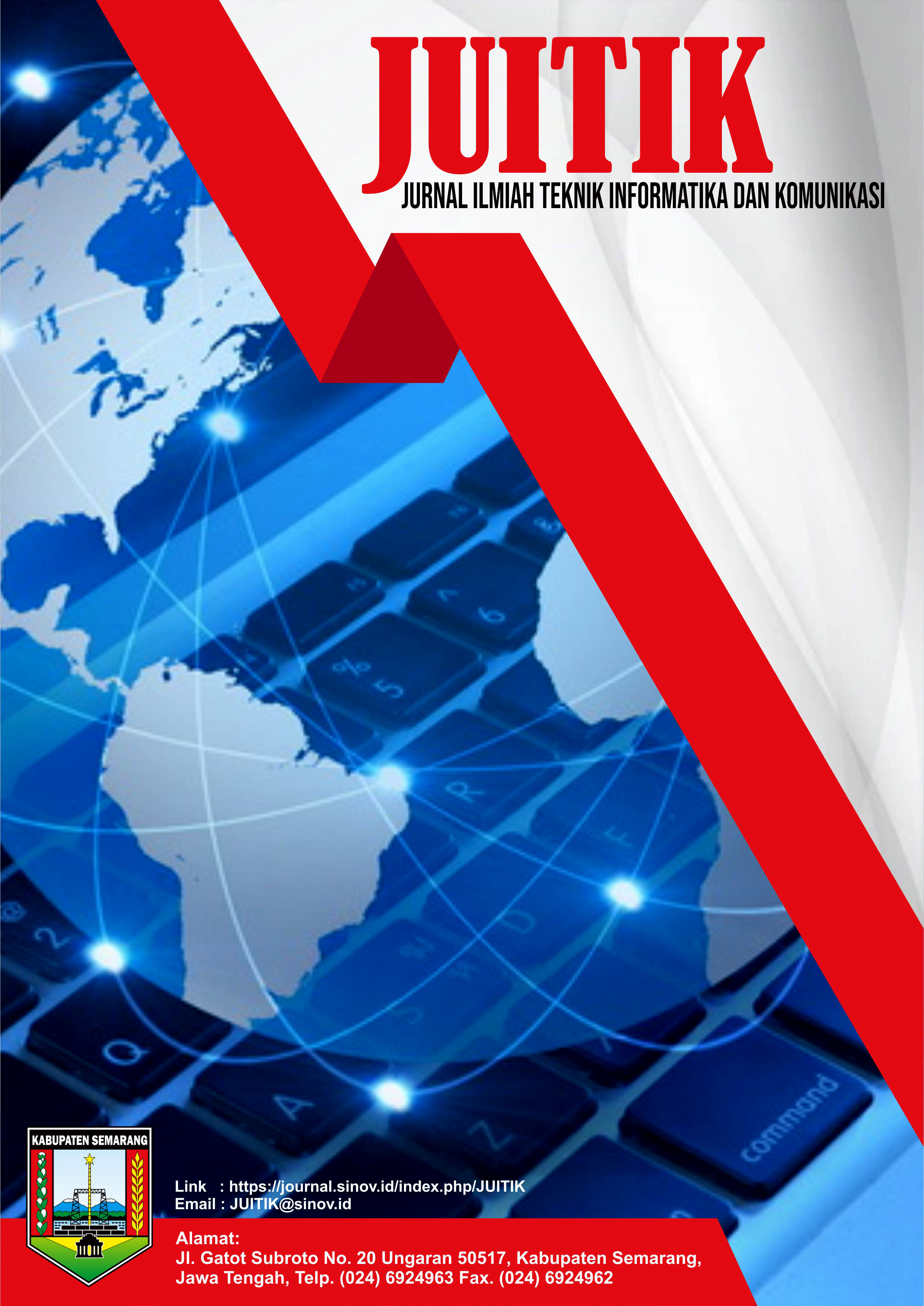Implementasi Arsitektur CNN DenseNet-121 untuk Identifikasi Autoimun Kulit dengan Augmentasi Data
DOI:
https://doi.org/10.55606/juitik.v5i2.1026Keywords:
Autoimmune Skin Diseases, CNN, Data Augmentation, DenseNet121Abstract
Autoimmune skin diseases are conditions in which the immune system mistakenly attacks healthy skin tissue, causing inflammation, tissue damage, and changes in skin color. The similarity of symptoms among various autoimmune skin diseases, such as psoriasis, lichen planus, vitiligo, hidradenitis suppurativa, and dermatomyositis, presents a challenge for accurate and timely diagnosis. This study was conducted to support the diagnostic process by utilizing deep learning technology, specifically the Convolutional Neural Network (CNN) method with the DenseNet121 architecture. Data augmentation techniques were also applied in this study to increase dataset variation, allowing for a performance comparison between the original dataset and the augmented dataset. The results show that the CNN model with the DenseNet121 architecture, configured with a batch size of 32 and 60 epochs on the augmented dataset, achieved a high accuracy rate of 92.43%. The model was then implemented into a web-based application and integrated using the Flask framework.
References
Albarbar, B., & Aga, H. (2024). A review on autoimmune diseases: Recent advances and future perspectives. Alq J Med App Sci, 7(3), 718–726. https://doi.org/10.54361/ajmas.247337
Bergqvist, C., & Ezzedine, K. (2020). Vitiligo: A review. Dermatology, 236(6), 571–592. https://doi.org/10.1159/000506103
Bhatt, D., Patel, C., Talsania, H., Patel, J., Vaghela, R., Pandya, S., Modi, K., & Ghayvat, H. (2021). CNN variants for computer vision: History, architecture, application, challenges, and future scope. Electronics, 10(20), 2470. https://doi.org/10.3390/electronics10202470
Boch, K., Langan, E. A., Kridin, K., Zillikens, D., Ludwig, R. J., & Bieber, K. (2021). Lichen planus. Frontiers in Medicine, 8, 737813. https://doi.org/10.3389/fmed.2021.737813
Hasan, N., Bao, Y., Shawon, A., & Huang, Y. (2021). DenseNet convolutional neural networks application for predicting COVID-19 using CT image. SN Computer Science, 2(1), 389. https://doi.org/10.1007/s42979-021-00782-7
Ingram, J. R. (2020). The epidemiology of hidradenitis suppurativa. British Journal of Dermatology, 183(6), 990–998. https://doi.org/10.1111/bjd.19435
Janiesch, C., Zschech, P., & Heinrich, K. (2021). Machine learning and deep learning. Electronic Markets, 31(3), 685–695. https://doi.org/10.1007/s12525-021-00475-2
Markoulidakis, I., Kopsiaftis, G., Rallis, I., & Georgoulas, I. (2021). Multi-class confusion matrix reduction method and its application on Net Promoter Score classification problem. In Proceedings of the 14th PErvasive Technologies Related to Assistive Environments Conference (PETRA '21) (pp. 412–419). https://doi.org/10.1145/3453892.3461323
Munandar, A. A., Farikhin, & Widodo, C. E. (2023). Sentimen analisis aplikasi belajar online menggunakan klasifikasi SVM. JOINTECS: Journal of Information Technology and Computer Science, 8(2), 77–84. https://doi.org/10.31328/jointecs.v8i2.4747
Putri, N. H., Jasril, Irsyad, M., Agustian, S., & Yanto, F. (2023). Klasifikasi citra stroke menggunakan augmentasi dan convolutional neural network EfficientNet-B0. Jurnal Media Informatika Budidarma, 7(2), 650–658. https://doi.org/10.30865/mib.v7i2.5981
Raharja, A., Mahil, S. K., & Barker, J. N. (2021). Psoriasis: A brief overview. Clinical Medicine, 21(3), 170–173. https://doi.org/10.7861/clinmed.2021-0257
Tanboon, J., Inoue, M., Saito, Y., Tachimori, H., Hayashi, S., Noguchi, S., Okiyama, N., Fujimoto, M., & Nishino, I. (2022). Dermatomyositis: Muscle pathology according to antibody subtypes. Neurology, 98(7), e739–e749. https://doi.org/10.1212/WNL.0000000000013176
Taye, M. M. (2023). Understanding of machine learning with deep learning: Architectures, workflow, applications and future directions. Computers, 12(5), 91. https://doi.org/10.3390/computers12050091
Yang, S., Xiao, W., Zhang, M., Guo, S., Zhao, J., & Shen, F. (2023). Image data augmentation for deep learning: A survei. arXiv preprint arXiv:2204.08610. https://arxiv.org/abs/2204.08610
Yang, Z., Cherian, S., & Vucetic, S. (2023). Data augmentation for radiology report simplification. In Findings of the Association for Computational Linguistics: EACL 2023 (pp. 1922–1932). https://doi.org/10.18653/v1/2023.findings-eacl.144
Zhong, Z., Zheng, M., Mai, H., Zhao, J., & Liu, X. (2020). Cancer image classification based on DenseNet model. Journal of Physics: Conference Series, 1651(1), 012143. https://doi.org/10.1088/1742-6596/1651/1/012143
Downloads
Published
How to Cite
Issue
Section
License
Copyright (c) 2025 Jurnal Ilmiah Teknik Informatika dan Komunikasi

This work is licensed under a Creative Commons Attribution-ShareAlike 4.0 International License.













